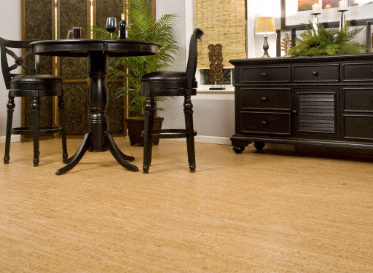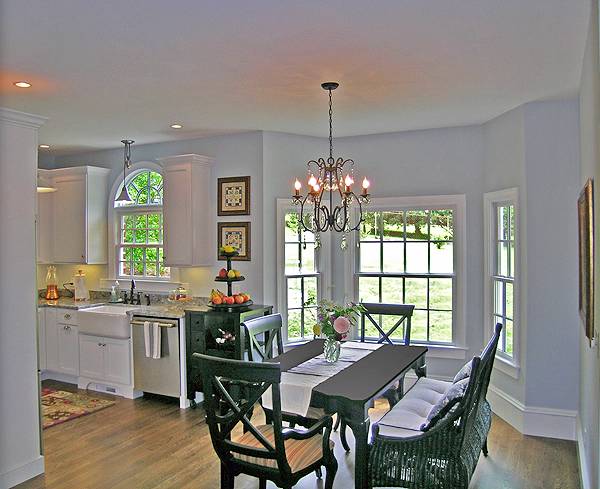For a green home you want a natural and durable material for your floors that has a bit of a different look to it, check out cork flooring. Cork might seem like an odd choice, and may make you think of the Boy Meets World episode where Cork World went out of business and Cory decided to decorate his apartment in wall to wall cork, but that is not true.
Cork doesn’t have to look like you gutted and glued a bunch of cork boards to your floor there are lots of fashionable choices at Lumber Liquidators® and the benefits of cork are numerous. Here are some of the reasons you will love a new cork floor.

Durable: Cork flooring resists cracking and abrasions and is impermeable to gas or liquid. Cork also bounces back underfoot so indentations caused by furniture or shoes won’t be permanent. A properly maintained cork floor can last forty years or more.
Healthy: Cork is resistant to mold, mildew and termites. It also does not off-gas or shed microfibers to negatively affect indoor air quality.
Comfortable: Cork flooring also provides comfortable cushioning underfoot because it gives when it’s compressed. Not to mention, cork is a natural thermal and acoustic insulator so rooms with cork flooring are naturally warm and quiet.
Versatile: Cork flooring is available in many styles and colors in the form of tiles or planks. You can use planks to create a seamless-looking floor or use tiles or alternating colors to create a more modern effect.

Practical: Unlike vinyl, the color and pattern of the cork penetrates the thickness of the material. This means that color and pattern are retained as it wears, which lengthens the usable life of the flooring.
Safe: Cork is naturally fire-resistant. It only melts or ignites at very high temperatures. It also generations less smoke before and during combustion, and releases less toxic material than vinyl flooring.
Green: As a building material, cork has minimal negative impact on the environment. A cork tree must be 25 years old before its bark can be harvested, after that cork can only be harvested every eight to fourteen years without killing the tree. The average life expectancy of a cork tree can be up to eight hundred years but typically ranges within one hundred fifty to two hundred years. The manufacturing process for cork also generates almost no waste. Cork flooring is actually a byproduct of manufacturing cork stoppers for wine bottles.
Cork flooring may seem like an out there option but with so many benefits it is catching on fast. There are many ways to add pigment and pattern to cork flooring to make it look as unique as you want it. Check out the cork flooring from Lumber Liquidators® for some inspiration and consider putting cork flooring in your energy efficient house plan from The House Designers.
- Building a House in Florida – Styles, the Process & the Costs - July 26, 2019
- Add Appeal to Your Home with These Design Tips - March 19, 2015
- Preparing Your Home for Spring - March 15, 2015
